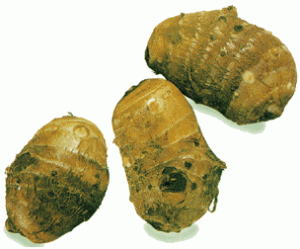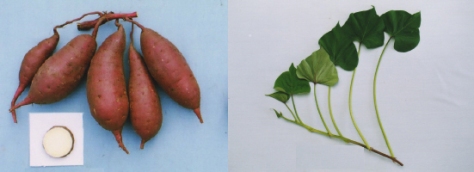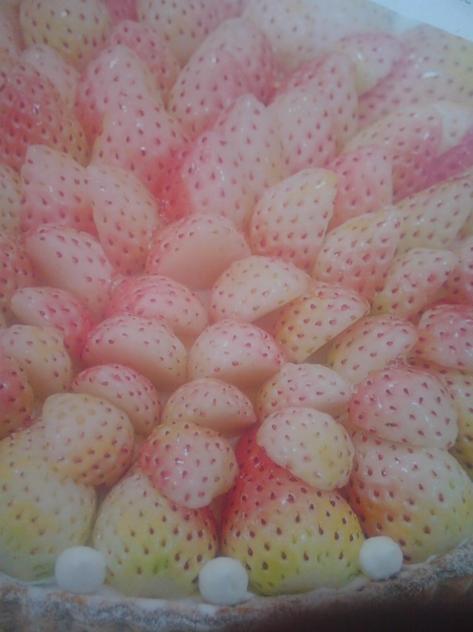
“IMO YOUKAN”, Japanese vegan cake made with sweet potato
Following the numerous queries on recently posted articles on “IMO” or “TUber” in Jaoanese, I thought it would come useful to froup all these articles into a single one for better comprehension and easier reference.
The problem is that “IMO/芋” in Japanese is a generic term used for all tubers, which mans totally unrelated species in some cases!
As far as the Japanese gastronomy is concerned, “IMO” can be divided roughly into 4 distinct groups:
SATO IMO/里芋, or TARO in English.
These are usually steamed or boiled and eaten as such or further cooked in stews. They can also be stewed directly by peeling and cutting them before throwing them into the pot.
It originated in Indonesia. Iy is becoming increasingly available in Asian markets all over the world.
YAMA IMO/山芋/ or YAM in English.
Yams can be eaten raw cut to size in salads, or grated as “Tororo Jiru/とろろ汁” (A specialty of Shizuoka Prefecture!) and served with rice, sashimi and so forth.
Grated, it also becomes a valuable liaise/link ingredient in Japanese gastronomy as a subsitute for wheat or cornstarch.
Varieties are found in many countries, but the Japanese use is very distinct.
Look for them in Asian markets.
SATSUMA IMO/薩摩芋/, or SWEET POTATOES in English.
Originating from the American Continent, they have become a universal treat.
Japan, on the other hand, has developped many local varieties over the years.
JYAGA IMO/じゃが芋, or POTATOES in English.
Like the sweet potatoes, potatoes Originated from the American Continent and have become the universal vegetable par excellence!
Japan, likewise, has developped many local varieties over the years.
Although plenty of explanations and suggestions will be found below, vegan and vegetarian should refer to VEGAN RECIPES where IMO is extensively represented, while omnivores should check SIMPLE RECIPES where they will have to look around!LOL
As this posting is for sharing do feel free to boroow and copy whatever strikes your fancy!
SATO IMO/里芋/TARO

Taro, also called Dasheen, and one of several plants called Cocoyam ,is a tropical plant grown primarily as a vegetable food for its edible corm, and secondarily as a leaf vegetable. It is considered a staple in Oceanic cultures. It is believed to be one of the earliest cultivated plants. In its raw form the plant is toxic due to the presence of calcium oxalate, although the toxin is destroyed by cooking or can be removed by steeping taro roots in cold water overnight. Taro is closely related to Xanthosoma and Caladium, plants commonly grown as ornamentals, and like them it is sometimes loosely called elephant ear.
The name “taro” is from Tahitian or other Polynesian languages; the plant is also called kalo (from Hawaiian), gabi in The Philippines, dalo in Fiji, Alu (अळू) in Marathi, seppankizhangu in Tamil, chembu in Malayalam, Arvee, Arvi, or Arbi in Hindi, Kosu in Assamese, Kochu(কচু) in Bengali, and Karkalo in Nepali.
In Japan, it is called satoimo (サトイモ, satoimo), (kanji: 里芋) “village potato”. The “child” and “grandchild” corms which bud from the parent satoimo, are called imonoko (芋の子, imonoko). Satoimo has been propagated in Southeast Asia since the late Jōmon period. It was a regional staple food before rice became predominant.
The tuber, satoimo, is often prepared through simmering, but occasionally grated and eaten raw or steamed. The stalk, zuiki, can also be prepared a number of ways, depending on its variety.
It is a very popular tuber in Japan and although the best season runs from September to November, it is very easy to conserve and is extensively used in many Japanese dishes.
It is of especially great value to vegetarians and vegans!
Here are some sample of cooking amenable to special priorities:

Sato Imo An/Taro in sweet and sour sauce

Taro wholly fried and seasoned with umeboshi/pickled Japanese plums

Sato Imo Nikome/Stewed Taro
TARO/SATO IMO VARIETIES:

Ishikawawase, very tender once steamed. Must be peeled before consumption.

Dodare, with strong stickiness, very soft, prevalent in Eastern Japan.

Kyo Imo, also called Take no Ko Imo, very popular for its long shape.

Chiba Maru, great and elegant taste.

Ebi Imo, although called Tou no Imo, quite sticky.

Yatsu Gashira, “Eight heads”, great stewed.

Serebesu, little stickiness, can be cooked as normal potato.

Hasu Imo, is not actually the tuber itself but the stems, eaten as green vegetables.

Yamato Wase, from Niigate and Toyama Prefectures, very white, sticky and fine-grained.

Yahata Imo, from Niigata Prefecture, great for stews.

Dentouji Sato Imo, sticky. Stems can be also eaten.

Zuiki Imo, are actually edible shoots of sato imo, mainly cooked in stews.
FACTS:
-Very rich in potassium and phosphorus!
-Vitamins B1, B2 and C.
-Rich in fibers.
TIPS:
-Best season: September~November.
-Prevent them from getting dry. Wrap them in newspaper with their attached mud/soil and keep in a well ventilated place away from the light.
-When cut, the best specimens are uniformly white without specks or blemishes.
-Very beneficial against obesity.
HEALTH FACTS:
-Combined with eggs, or chicken, or sardines, or bonito, helps brain activity and increases stamina.
-Combined with tofu, or dry bonito shavings, or skimmed milk, helps brain activity.
-Combined with mushrooms, or devil’s tongue tuber, or burdock root, helps lower blood cholesterol and cobat high blood pressure and cancer.
-Combined with seaweed, or miso, or onions, or chili peppers, helps with digestion and blood flow.
———————————————-
YAMA IMO/山芋/YAMS

Yama no Imo Plant
Yama Imo or Yama no Imo/山芋 is the Japanese name for Japanese Yam.
It has been picked in its natural form and cultivated for eons in Japan where it comes into many recipes, either as a vegetable of its own or as an additive to Japanese recipes as a liaising ingredient.
It is also extensively used in vegetarian (vegan) cuisine in this country.
It is also very much valued for its stamina and medicinal properties.
FACTS:
-Contains a high amount of potassium, calcium, magnesium, natrium and other minerals.
Rich in Vitamin B1, B2, B6 and C and vegetal fibers.
-Easy to digest and eat either raw or cooked.
VARIETIES:
There are quite a few varieties and can be all used in the same way:

Yama no imo: Nagaimo/長い芋

Shizenjyo is the natural and highly priced Japanese Yam!

Ichyo Imo

Tsukune Imo

Mukago
Mukago is actually the aerial seed and can be eaten. Slightly expensive considering the size, but great taste, boiled or deep-fried.
TIPS:
-Choose a specimen that shows a uniform colour without blemishes.
-Some people’skin might get irritated when cutting the yama Imo. In this case deep-freeze it first and cut it as it is.
-Preserve as a whole wrapped into newspaper inside the fridge.
-Preserve it cut inside an airtight vinyl bag in the freezer.
COOKING:

It is greatly appreciated just cut in thin slices/sticks with a little ponzu, shiso and ponzu!

It is often served as a component of an array of dishes into a full Japanese meal. Grated into paste, it is called “tororo”.

It can be sauteed/fried with olive oil, sesame oil or butter!

Grated, it can combined with tofu,

or into okonmiyaki!

It can also become a great appetizer when combined with agar agar!

Europeans and Americans will appreciate it as a gratin!
HEALTH FACTS:
-Combined with daikon, or turnips, or Chinese cabbage, or chili peppers, helps reinforce the digestive system and appetite.
-Combined with okra, or lotus roots, or nameko mushrooms, helps lower blood cholesterol and provides additional stamina.
-Combined with soy beans, or pomegranate, or myoga ginger, helps balance hormones and blood circulation.
-Combined with cabbage, or potatoes, or broccoli, or Chinese cabbage, helps combat cancer and ageing.
—————————————–
SATSUMA IMO/薩摩芋/SWEET POTATOES

Yams or “Satsuma Imo” were first introduced to Japan in the Ryukyu Islands (Okinawa) in 1604 by the Chinese. It was then introduced in Kyushu in 1609, an area that grows 80% of the total Japanese production.
As rightly pointed out by Cometiblog, sweet potatoes should not be confused with yams or yama imo/山芋 in Japanese.
It has been recognized in this country for a long time for both its nutritional and pharmaceutical qualities.

There are over a hundred species in Japan, but the most popular edible ones (not the ones exclusively used for making shochu) have red skins and light yellow flesh.

Beni Azuma, mostly eaten in Eastern Japan. Turns very sweet upon cooking.

Naruto Kintoki, popular in Western Japan. Considered elegant and sweet.

Tosabeni, also attributed “No 14 value (top)”, is very sweet and is a “brand name” sweet potato.

Cheese cake combination with Tosabeni Sweet Potato!

Manamusume, another “No 14 value” brand sweeet potato.

Gorou Shima Kintoki, particularly popular as baked sweet potato.

Kogane Sengan, considered as the top shochu sweet potato.

Tanegashima Mukashi Mitsu, a sweet potao with a beautiful orange colour and elegant taste.

Tanegashima Murasaki Imo, as above, but with a beautiful purple colour.

Annou Imo, rich in carotens, with a beautiful orange colour and very sweet.

Annou Imo cuisine!

Purple Sweet Road, an interesting name for a sweet tasty hybrid.

The same as above as hyokan Japanese jelly!

My personal favorite is the “Tanegashima Gold Imo” grown in Taneko Island south of Kyushu. It has the particularity of being red when raw before chaning to a rich golden color when cooked. Among other varieties, the violet sweet potatoes are getting increasingly popular.

Tanekoshima sweet potato (deep yellow), “common sweet potato” (light yellow) and Murasaki/Violet potato.
The Missus particularly likes to mix the three above as a cold salad with mayonnaise or cream-based dressing.
FACTS:
-Season: September to November
-Main elements: Carbohydrates, Carotene, Vitamin B, C, E. Potassium, Calcium, Magnesium, vegetal fibers.
-Beneficial to digestion. Good for the skin!
-Lose very little of its beneficial elements even after a long cooking.
TIPS:
-Choose specimens with nice color and a “fat/roundish” aspect!
-Plunge yam in cold water as soon as you have cut them. They will not lose their color!
-Boil, bake or steam long enough before taking skin off. Discard skin!
-Leaves can be eaten!
HEALTH FACTS:
-Combined with burdock root, or shiitake, or carrot, or spinach, helps combat colds, helps enhance skin health, helps combat llung and intestine cancer.
-Combined with devil’s tongue tuber, or hijiki sweet seaweeed, or beansprouts, or apple, helps combat cancer, constipation, obesity, and artery hardening.
-Combined with Judas ear mushroom, or shiitake, or seaweed, or hijiki sweet seaweed, helps lower blood cholesterol, helps combat obesity and diabetes.
-Combined with strawberries, or lemon, or pimentoes, helps combat stress, helps skin rejuvenation and intensifies appetite.
——————————
JYAGA IMO/じゃが芋/POTATOES

Incidentally (repeat!) nothing, pictures included, is copyrighted in my food blogs, so please feel free to use anything!

“Danshaku”
Potatoes were first introduced to Japan in 1910 by Baron Kawata from Great Britain/Ireland giving the name of “Danshaku/Baron” to the most commonly used potato in Japan, especially in croquettes and salads.
The biggest potato exporters to Japan are China and India, although more and more grown locally.
Over the years Japanese famers have greatly expanded the number of varieties, and it has became an embarrassment ofchoices.
Below are varieties found in Japnese supermarkets:

“Kita Akari” used for mashed potatoes and croquettes,

“May Queen” used in stews,

“Toyoshishiro” used for fried potatoes,

“Red Andes” used for croquettes and Pot au feu,

“Inca No Mezame” used for stews.

“Inca No Hitomi”. Also called “Inca no Mezame”, they are popular for their nutty taste.

“Hokkai Kogane”. Grown mainly in Hokkaido Island, they have the particularity to oxydize and change colour a lot later than other potatoes.

“Tokachi Kogane”. Can be stocked and preserved a long time. Make for great fried potato chips!

“Mathilda”. Fine-grained and usually vey regular-shaped, theycan be presented whole for good effect.

“Touya”. Very good for long cooking as they don’t break away easily.

“Star Ruby”. A relatively new viety very apt for stews.

“Cynthia”. Recently imported vaiety from France. Very fine grain. Does break up even after being cooked long time.

“Kita Murasaki”. Very unusual potato with skin and flesh of the same colour. Better fried than boiled as wate will get couloured.

“Red Moon”. Also called “Red May Queen”, great for stews.
Potatoes are available all year round, but are at their peak from May to July in Japan when new potatoes can be eaten whole!
New potatoes can be found from Februray to June.
FACTS CARD:
-Season: All year round
-76 kcal per 10 g
-Main elements: carbohydrates (high energy), Vitamin C1, B1, B2, B6 (thanks to a large amount of natural starch in potatoes, the vitamin C will resist heating!), Potassium, Magnesium, Iron.
-Preservation: Wrap potatoes inside newspaper and keep them in a dark, well-ventilated place away from the sunlight.
TIPS:
-Choose specimens well-rounded and with healthy skin. Avoid specimens with buds or of greenish colour (risks of diarrhea). Cut out all “dark spots”!
-Preserve them together with apples to prevent buds from coming out!
-To avoid a change of colour, wash potatoes in water after peeling or cutting.
-If you want to keep your potatoes for a while after boiling them, plunge them in (change it as many times as necessary) cold water until completely cooled down. They will not break or crumble when used later.
-After boiling cut potatoes, throw away water and keep heating them until they have lost a great part of their moisture. They will attain a crispy enough nature without resorting to deep-frying!
HEALTH FACTS:
-Combined with kiwi fruit or cucumber, or green tea, or mayonnaise, they help combat cancer, high blood pressure and ageing.
-Combined with Chinese cabbage, or peach, or banana, or honey, they help combat digestive disorders.
-Combined lemon, or strawberries, or spinach, or broccoli, they help combat stress, constipation and cancer.
-Combined with vinegar, or chicken, or bonito (katsuo), or oysters, they provide extra body stamina.
RECOMMENDED RELATED SITES:
Warren Bobrow, Bread + Butter, Zoy Zhang, Hungry Neko, Think Twice, Frank Fariello, Mangantayon, Hapabento, Elinluv Tidbit Corner, Tokyo Terrace, Maison de Christina, Chrys Niles,Lexi, Culinary Musings, Wheeling Gourmet, Comestiblog, Chronicles Of A Curious Cook, Bento Boutique, Tokyo Through The Drinking Glass, Tokyo Foodcast, Urban Sake, Sake World, Palate To Pen, Yellin Yakimono Gallery, Tokyo Terrace, Hilah Cooking, More than a Mount Full, Arkonite Bento
Please check the new postings at:
sake, shochu and sushi
—————————————-
日本語のブログ
—————————————-

















































































































 Non-smoking at tables.
Non-smoking at tables.










